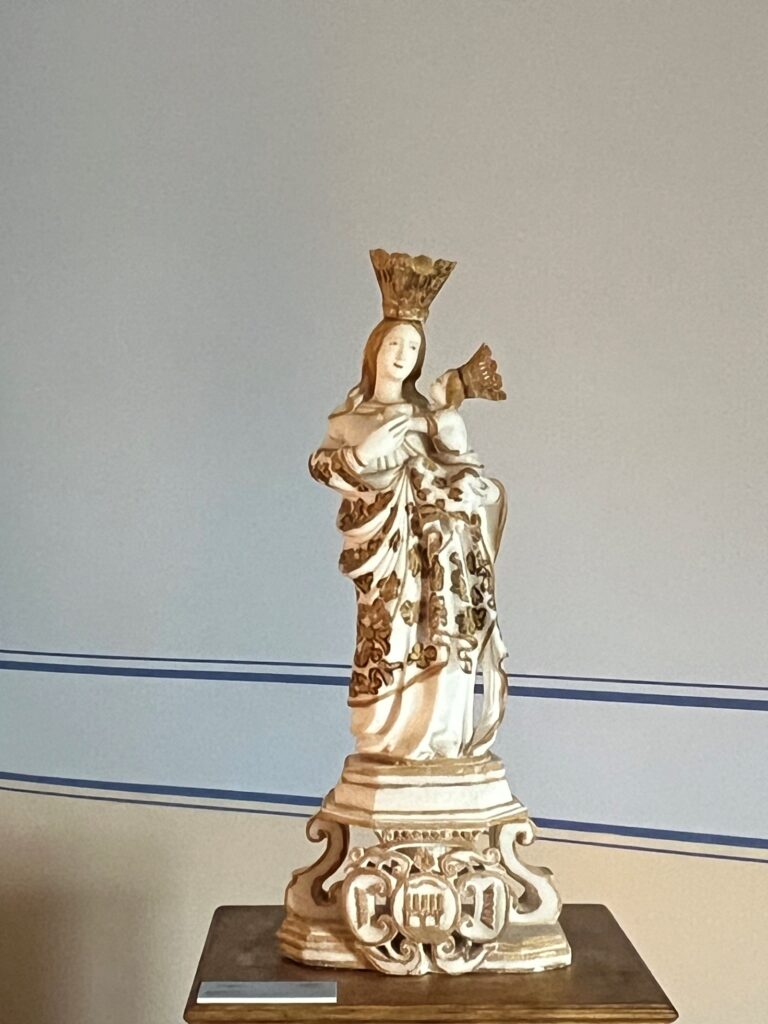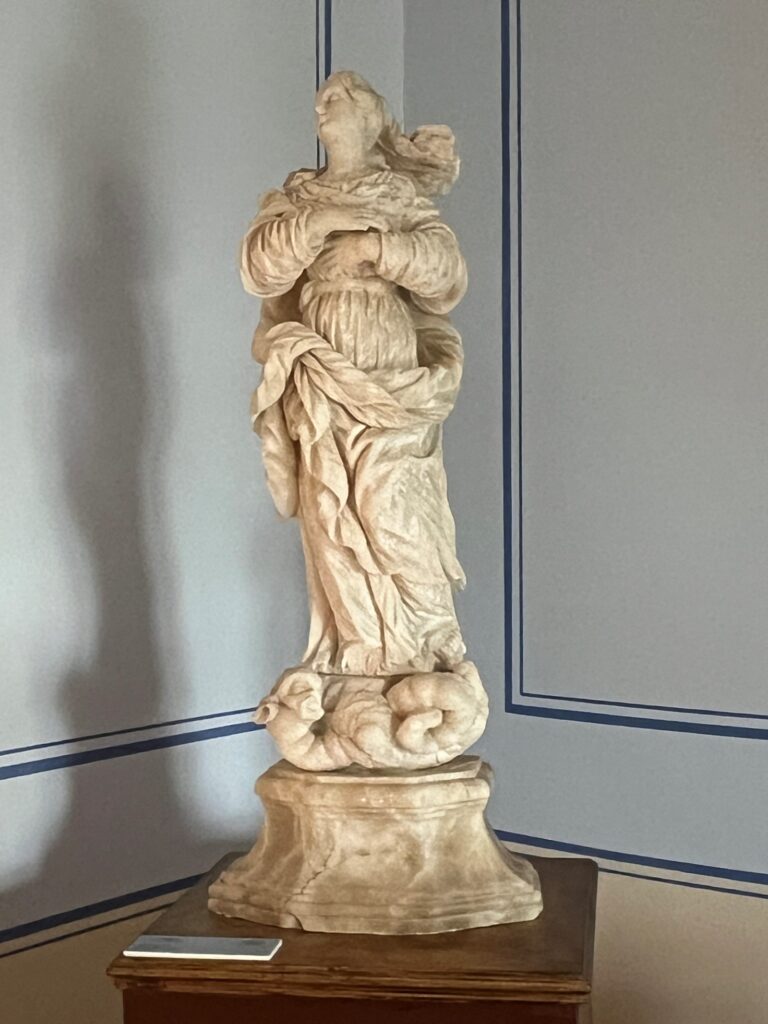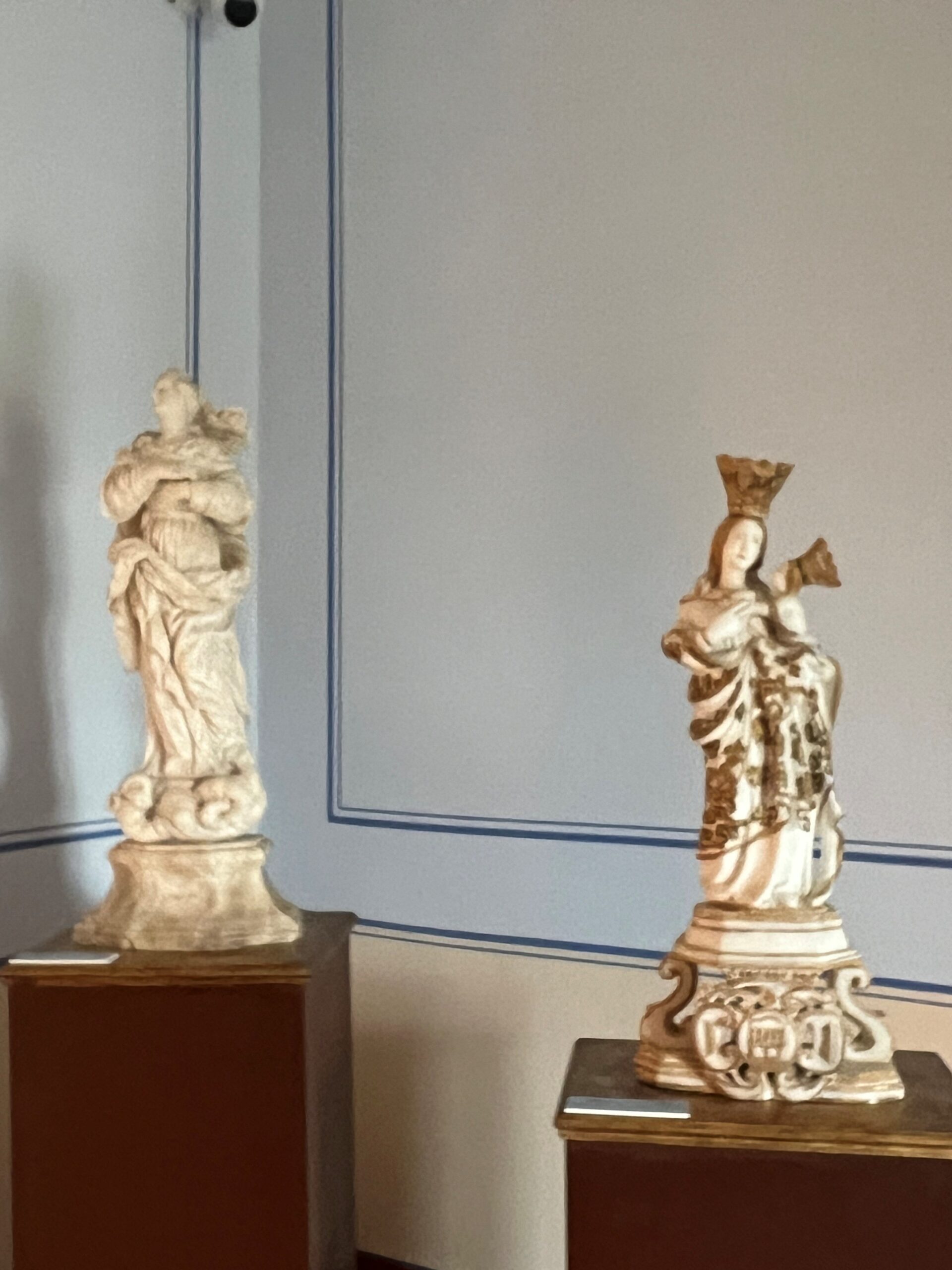
The Madonna of Trapani
Polychrome marble statue – from the Episcopal Palace on Lipari
The Statue, carved in the round, represents the full-length Madonna with the Child in her arms. It is most probably one of several copies made in Trapani in the 16th century, based on the model of the Madonna of the SS. Annunziata, patron saint of the same city, attributed to Nino Pisano.
On the base is placed in bas-relief the coat of arms of the city of Trapani: a castle with five towers over the sea, surmounted by a scythe. The statuettes, small in size, were disseminated as a devout reminder of pilgrims, especially sailors and seafarers, of whom this Madonna was the patron saint. Devotion may also have come to Lipari through fishermen.

The Immaculate Conception
Alabaster marble statue – from the Episcopal Palace of Lipari
The Immaculate Virgin is represented according to the most widespread iconographic canons: her hands joined on her breast and a dragon, symbol of Satan, under her feet. Revealed inside the Bishop’s Palace, its original location remains unknown.

